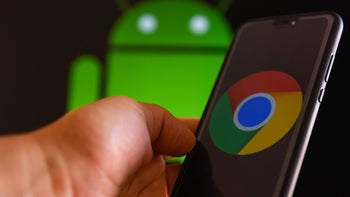Chrome is finally hogging less memory

Chrome, Oh, Chrome
Both computers and mobile devices need RAM to store data close at hand where it is immediately accessible to your system to revisit. It is many times faster than regular storage, comes in much smaller sizes, and only saves data you might need to re-use when your device is powered on.
And while most modern mid-range PCs can support 16 or 32 GB upgradeable RAM (or more), phones have considerably less of it available to them due to size constraints and lesser needs in general. Unless you're buying the overkill ROG Phone 5 Ultimate, which flexes 18 GB of RAM and exists purely because it can, you're likely working with anywhere from 2-12 gigabytes of memory on your smartphone. You can't hook up multiple screens to a phone, either, so you don't really need that much anyways—unless you're a Chrome fan and like me, you simply need at least 100 tabs open at any given time. (Who uses mobile bookmarks, anyway?)
Why Does It Need So Much RAM?

The reason Chrome's been eating through your RAM like an absolute monster is because it always saves everything you see on the screen in a given Chrome tab separately to your RAM. If you open a website's photo gallery which downloads 100 MB of images for your viewing pleasure, those 100 megabytes are staying in the RAM until you close the tab (if you ever do). Chrome isolates every single tab in a separate RAM process, as well as any extensions and plugins you might be using, to make sure that if one crashes, it won't take everything else down with it.
Read more: Chrome OS introduces Android Phone Hub
Chrome also does something called pre-rendering, which predicts which link you may open next and pre-loads it for you, further using your resources but improving your browsing experience—as long as your RAM isn't clogged to the brim.
What Did Chrome 89 Bring?

While Chrome's new update brings the highest memory savings to Windows (using up to 22% less), Android benefits from 5% less memory usage, 7.5% faster startup times, and 2% faster webpage load times, among other things. It may not be so much to write home about, but as 9to5Google notes, Android Chrome is now crashing less because it's no longer hitting resource exhaustion so easily. For phones with Android 10+ with 8GB of RAM or more, Chrome 89 brings to the table 28% smoother scrolling and input latency, and loads pages 8.5% faster. Chrome accomplished this by developing its own memory allocator, PartitionAlloc, which vastly improves space efficiency and security on both Android and Windows.
If you didn't know Chrome was as much of a glutton for mobile RAM as it is on PCs and laptops, and you're a mobile Chrome user wondering why your phone feels so sluggish lately—that may well be the reason. Even with the new optimization, Chrome tabs can still eat through enough resources to negatively affect your entire smartphone experience (not just browsing, but games and other apps too), so it might be time to introduce yourself to Chrome's bookmark function on Android.









Things that are NOT allowed: